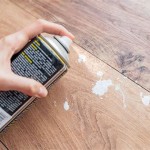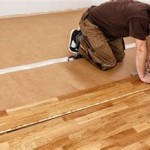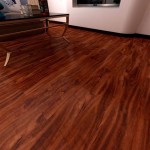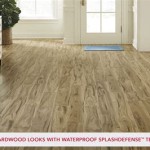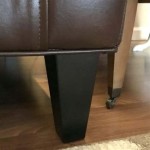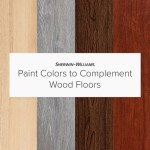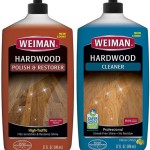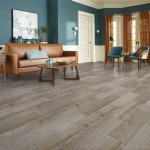Stick On Wood Floor Tiles: A Comprehensive Guide
Stick-on wood floor tiles, also known as peel-and-stick wood planks, offer a convenient and cost-effective way to update flooring. These tiles combine the aesthetic appeal of real wood with the ease of installation associated with adhesive-backed products. This article will explore the various aspects of stick-on wood floor tiles, including their composition, installation process, benefits, drawbacks, and suitable applications.
Material Composition and Construction
Stick-on wood floor tiles are typically constructed with several layers. The top layer, often referred to as the wear layer, provides protection against scratches, scuffs, and everyday wear. This layer can be composed of various materials, including vinyl, engineered wood, or even a thin veneer of real hardwood. The core layer provides stability and structure, often made from high-density fiberboard (HDF) or other composite materials. Finally, the bottom layer consists of a pressure-sensitive adhesive that allows for easy installation.
Different manufacturers utilize varying materials and thicknesses for each layer, impacting the overall durability and performance of the tiles. It's crucial to carefully consider the composition of the tiles when selecting a product, paying close attention to the wear layer's material and thickness for optimal longevity.
Installation Process and Preparation
One of the key advantages of stick-on wood floor tiles lies in their simplified installation process. Unlike traditional hardwood flooring, which requires specialized tools and expertise, stick-on tiles can often be installed as a DIY project. The process generally involves cleaning the existing subfloor thoroughly, ensuring it is level and free of debris. Once the subfloor is prepared, the tiles can be peeled from their backing and adhered directly to the floor, following the manufacturer's instructions for proper placement and spacing.
While the installation is generally straightforward, certain precautions should be taken. Accurately measuring the area and planning the layout is crucial for minimizing waste and achieving a professional finish. Additionally, ensuring the subfloor is completely dry and free of any moisture is essential to prevent adhesive failure and potential damage to the tiles.
Benefits of Using Stick-On Wood Floor Tiles
Stick-on wood floor tiles present several advantages for homeowners and renters seeking a cost-effective and convenient flooring solution. Their ease of installation significantly reduces the time and labor required compared to traditional flooring options. This, coupled with the lower material cost, makes them a budget-friendly choice for many. Furthermore, the wide array of styles and finishes available allows for versatile design options, mimicking the look of various wood species and textures.
Beyond their affordability and ease of installation, these tiles also offer practical benefits. Many are designed to be water-resistant, making them suitable for areas prone to moisture, such as kitchens and bathrooms. Additionally, their relatively thin profile allows for seamless transitions with existing flooring, minimizing the need for significant adjustments to doors and trim.
Drawbacks and Considerations
While stick-on wood floor tiles offer numerous advantages, they also come with certain limitations. Durability can be a concern, particularly with lower-quality products. The thin wear layer can be susceptible to scratches and dents, especially in high-traffic areas. Furthermore, the adhesive backing may not adhere well to all subfloor types, and uneven surfaces can lead to instability and premature wear.
It's also important to note that stick-on tiles are not as long-lasting as traditional hardwood flooring. Their lifespan is generally shorter, and they may require replacement sooner. Additionally, repairing damaged tiles can be challenging, often necessitating the replacement of the entire affected tile.
Suitable Applications and Environments
Stick-on wood floor tiles are well-suited for a variety of applications, particularly in residential settings. They are a popular choice for renters due to their ease of installation and removal. They are also suitable for use in basements, laundry rooms, and other areas where moisture resistance is a priority. However, it's important to choose tiles specifically designed for these environments to ensure optimal performance.
While generally suitable for residential use, stick-on wood floor tiles may not be the ideal choice for high-traffic commercial spaces or areas subject to heavy wear and tear. In these environments, more durable flooring options like traditional hardwood or engineered wood are often preferred.

7 Things To Know Before Trying Peel And Stick Flooring

D C Fix Grey Wood Peel And Stick Floor Tiles 30 5cm X 1sqm Pack By

Lacheery Peel And Stick Floor Tile Wood Look 6 X36 Light Grey Plank Vinyl Flooring Tiles 4 Yahoo Ping

2 0mm Self Adhesive Pvc Vinyl Plank Flooring Peel And Stick Diy Wood Floor Tiles Made In China Com

Lacheery 36 X6 Brown Peel And Stick Floor Tile Wood Look Waterproof Vinyl Plank Flooring Tiles On Bathroom Stickers Self Adhesive

Peel And Stick Floor That Looks Like Real Hardwood Small Entryway Makeover Part 1

Art3d White Washed 6x36 Water Resistant Peel And Stick Vinyl Floor Tile Self Adhesive Flooring 54sq Ft Case A43hd001 The Home

Peel And Stick Floor Tiles Roommates Decor

Lacheery 36 X6 Brown Peel And Stick Floor Tile Wood Look Waterproof Vinyl Plank Flooring Tiles On Bathroom Stickers Self Adhesive

Art3d Deep Grey 6x36 Water Resistant Peel And Stick Vinyl Floor Tile Self Adhesive Flooring 54sq Ft Case A43hd003 The Home
See Also
